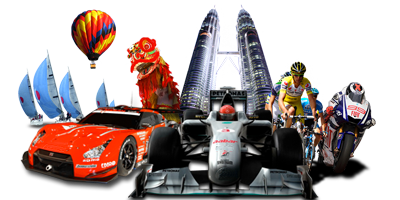

Brief History
History of Malaysia
Malaysia grew to prominence in Southeast Asia due to its strategic position for trade and commerce during the end of the 16th century. The political and socio-economic landscape since its independence has helped propel the nation to achieve a dynamic economy. Malaysia has a rich legacy of history, from the early days of Hindu, Buddhist and Islamic civilisations to colonial imperialism and independence.
The Early Civilisations
Malaysia’s warm climate and wealth of natural resources have attracted the indigenous tribes or better known as Orang Asli around 3,000 BC. They probably set foot from Tibet and China to the south. However, it was the Malay Sultanate Kingdom in Melaka during the 15th Century that made the nation a trading and commercial hub that attracted people from the world over. This was also the time when Islamic influence became stronger and the Sultans and the Malays started to embrace Islam as their religion.
Colonial Imperialism
The popularity of Melaka has attracted the Europeans, particularly the Portuguese. They captured Melaka in 1511 but soon, in 1641, the Dutch took over the reign. The disposed Malay rulers fled to the south and they established a new Sultanate. The British which established its own footing in Singapore, Penang, Kuching, Jesselton, became the next colonial imperialist when they signed the 1825 Anglo-Dutch Treaty that defined Netherland East Indies (Indonesia) and British Malaya. It was the British who then brought in the Indian and Chinese immigrants to work in rubber plantations and tin mines. The British continued to rule Malaya until World War 2.
World War 2 and Independence
The British was defeated by the Japanese during the World War 2 but then their rule was short-lived when the Japanese was defeated by the Allied Forces. The British returned but the political landscape had changed. The Malays were united and protested against the Malayan Union formed by the British as they felt it was taking away their Sultan’s political rights. The protest was led by the United Malays National Organisation or UMNO formed by Dato’ Onn bin Jaafar. The Federation of Malaya was formed to replace Malayan Union and gave back the political rights to the Sultans. On August 31, 1957, Malaya gained independence and Tunku Abdul Rahman became the first Prime Minister.
Malaysia After Independence
In September 16, 1963, Malaya, Sabah, Sarawak and Singapore formed Malaysia. The first few years after independence, the country's history were marred by a Communist insurgency, Indonesian confrontation with Malaysia, Philippines claims on Sabah, and Singapore's departure from the Federation in 1965 and the racial riot in 1969. However, no matter what turbulence the country was facing, Malaysia grew stronger under the National Front Coalition government led by UMNO. During the 22-year leadership of Prime Minister, Tun Dr Mahathir Mohamad (1981-2003), Malaysia was successful in diversifying its economy from dependence on agriculture to expansion in manufacturing, oil and gas, services and tourism industry.








